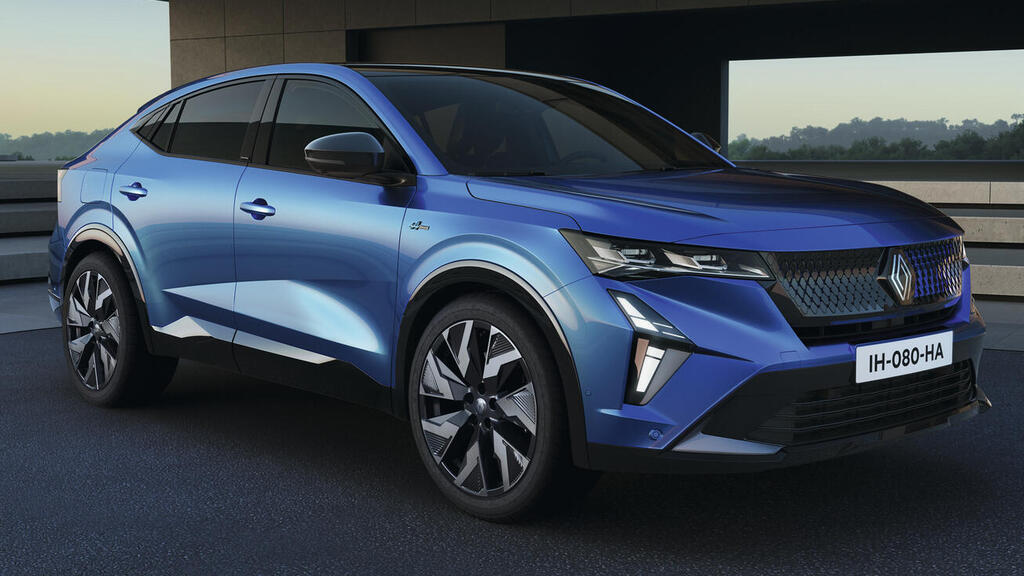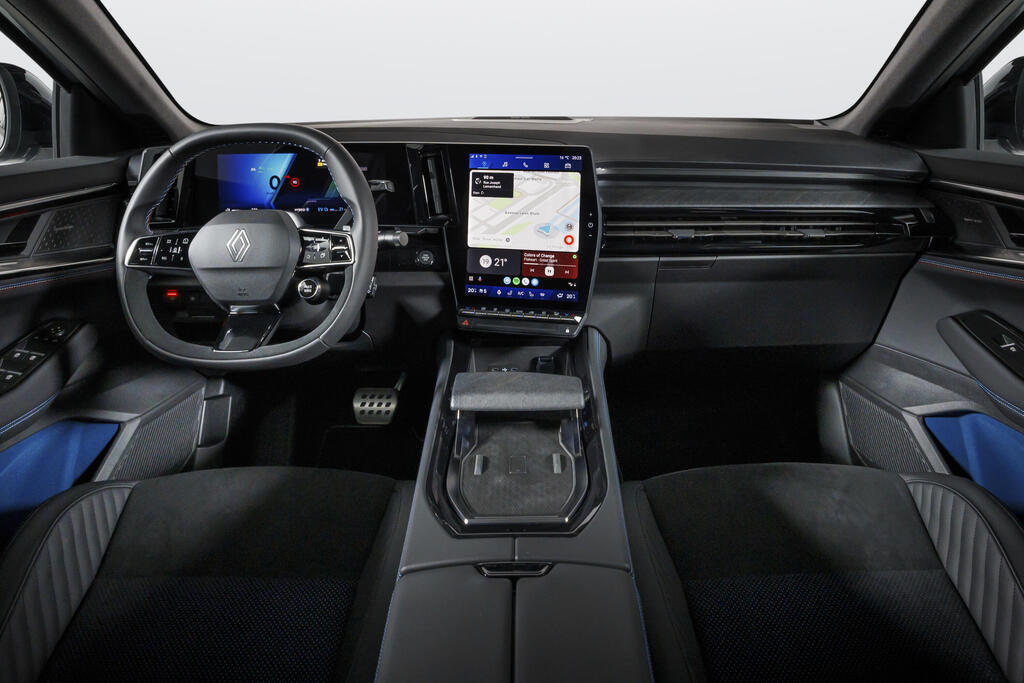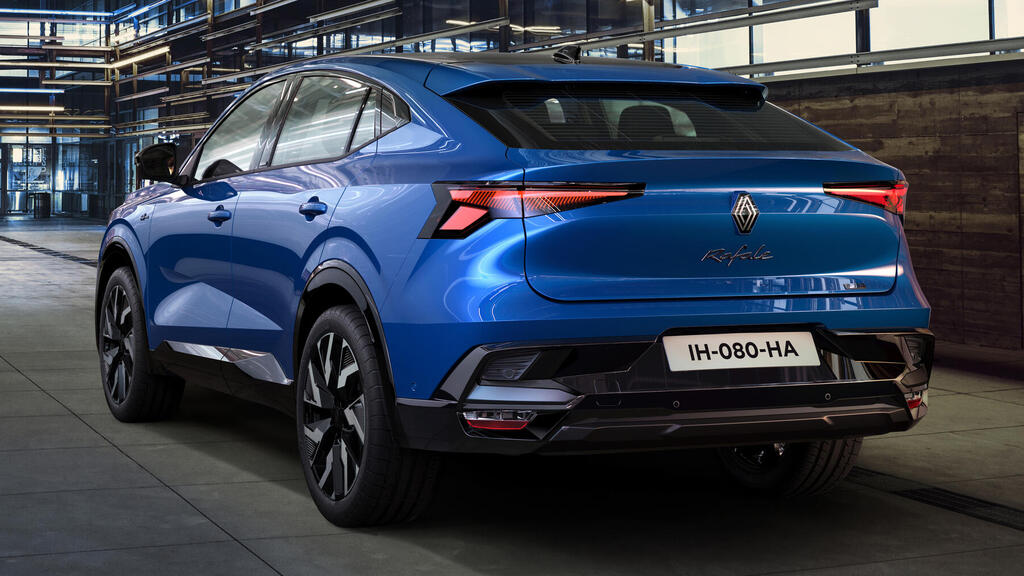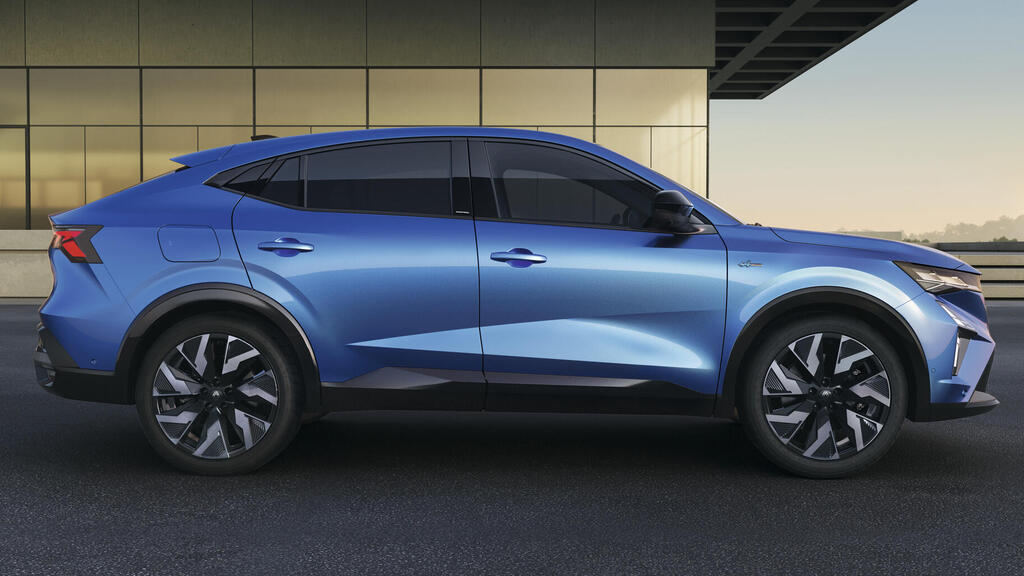Getting your Trinity Audio player ready...
Renault unveiled its new car, Rafale, which will be the company’s fifth sport utility model in Europe. Its name is derived from Renault's history in the 1930s when it acquired control of the Caudron aircraft manufacturer.
More stories:
The C460 Rafale, which was introduced shortly after the acquisition, was a single-seat aircraft designed to participate in air races and set a world speed record of 455 km/h in 1934 with the famous pilot Hélène Boucher.
The new Renault is built upon the previous Espace model, which was unveiled three months ago, with the same wheelbase (274 cm). However, the Rafale is wider by 2 cm (186 cm), shorter by 1 cm (471 cm), and lower by 3.5 cm (161 cm).
In addition to its distinctive silhouette, the front, and rear also feature elements that give it a dynamic and sporty appearance compared to the conventional Renault design. The reason for this is designer Gilles Vidal, who was responsible for the design philosophy revolution at Peugeot and recently moved to Renault, which also explains the resemblance to his previous employer's vehicles.
The car’s interior is familiarly taken from Renault's other modern models, with a digital dashboard (12.3"), a large top display (9.3"), and a vertical touch screen (12") in the central console based on Google's operating system, with approximately 50 available apps for download.
The sunroof can be fully or partially shaded in different areas and automatically turns off when the car is locked to prevent excessive heating of the passenger compartment. The car’s safety system includes a forward traffic collision avoidance assist (FCA), lane-keeping assist, adaptive cruise control, blind-spot monitoring, and matrix LED lighting.
The Rafale will be equipped with Renault's well-known hybrid propulsion unit. It features a turbocharged gasoline engine with three cylinders and a displacement of 1.2 liters (131 hp), along with two electric motors (67 hp and 34 hp) with a total output of 200 hp.
Power is transferred to the front wheels through the original gearbox (four for the gasoline engine, and two for the electric motors) without clutches. The modest electric motor serves to combine transmission ratios, as a starter for the gasoline engine, and also as a generator for the car’s battery.
The car’s performance data has not been released yet, but according to Renault, the propulsion system allows for approximately 80% of urban trips to be performed using electric power alone. In the future, a hybrid-rechargeable version will also be offered with an additional electric motor at the rear, directly connected to the adjacent wheels, providing constant dual propulsion and a combined output of 300 hp.
The Rafale is equipped with active rear steering (5 degrees), allowing for a similar turning radius to the company’s Clio model (10.4 meters). The suspenders receive different calibrations for springs, shock absorbers, and stabilizer bars, with 245 mm tires, aimed at improving its dynamic capabilities.
Our thoughts: Renault has recently expanded its sport utility model lineup significantly, enabling it to better meet the high demand for these models in various shapes and sizes.
The Rafale is not expected to surpass the company’s small Captur model, which is the best-selling one, but it’ll help Renault position itself higher than before as an alternative company for luxury models.
Renault has yet to announce the model’s prices. Based on its positioning within the manufacturer’s hierarchy, it’s expected to be the most expensive model in Renault's lineup, potentially surpassing the 300,000 shekels threshold when it arrives in Israel in 2024.





